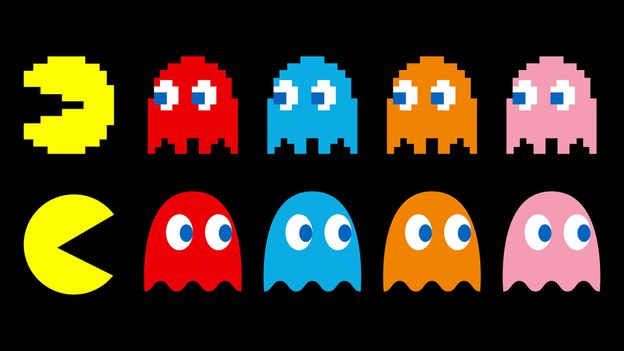
“Pac-Man [the character] was designed to represent the core concept of the game, ‘to eat’, in the simplest way possible,” Michiko Kumagai, the licensing manager for the iconic character at the game’s publisher, Bandai Namco, tells the BBC. “Just like the McDonald’s arches, he’s become an internationally recognised symbol. At one glance everyone can understand what Pac-Man means instinctively, [which] is why Pac-Man has reached such a wide audience.”
Reach a wide audience it certainly has. Originally called PuckMan in Japan, a reference to the Japanese phrase “paku paku taberu”, which means to gobble something up while producing a greedy, jaw-snapping sound, Pac-Man is the most successful coin-triggered arcade game of all time, according to the Guinness Book of World Records. The character remains an enduring symbol even today, with the franchise having generated an estimated $14bn in revenue, from both arcade machines and dozens of re-releases on home consoles; the games have appeared on everything from the Nintendo Entertainment System [NES] to the Xbox 360.
Pac-Man has also racked up awareness-boosting cameos over recent years in big budget animated kids films including Wreck-It Ralph (2012) and Pixels (2015), while last month Bandai Namco released Shadow Labyrinth, a game that provides a fresh spin on the beloved Pac-Man gameplay.
Why the game works so well
“Pac-Man is one of the figureheads of the birth of mainstream video gaming,” Peter Etchells, professor of science communication at Bath Spa University tells the BBC. “There was an elegant simplicity to its gameplay and design that I think captured a lot of players’ imaginations.”
You don’t need to be a hardcore gamer to appreciate the character’s core purpose of strategic nibbling, with Pac-Man’s gameplay both refreshingly simple and, ultimately, difficult to master. When it came to the original, gamers could either frenetically run around without much thought or, like many people did back in the 1980s, religiously read a How to win at Pac-Man guide that taught you how to memorise hundreds of complex maze patterns and optimal paths. Such tactical preparation would make you war-ready to compete at a Pac-Man tournament – of which thousands have been hosted worldwide.








